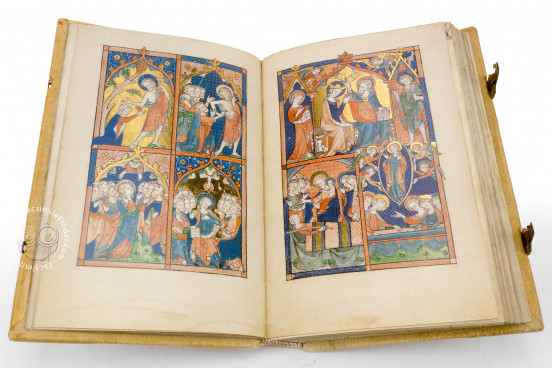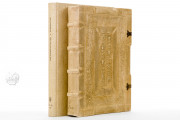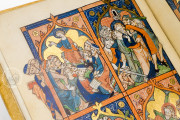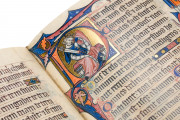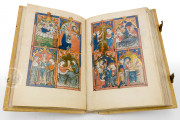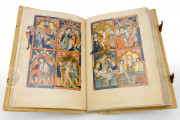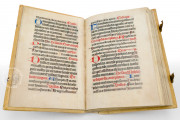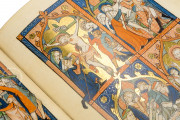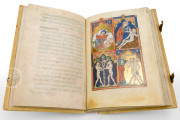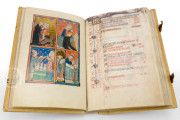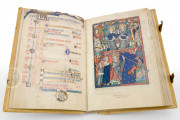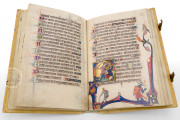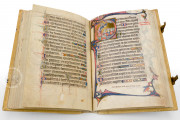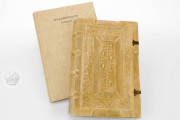The Ramsey Psalter is one of the most elaborate Gothic manuscripts from the United Kingdom. The codex was written and illuminated in the last quarter of the thirteenth century and features forty superbly made illustrations and twelve deluxe figural initials. The excellent and extensive use of gleaming gold, not for the miniatures alone but also for border decorations and initials, makes this manuscript unique in style and elegance.
Written toward the end of the thirteenth century, the Ramsey Psalter is named after the place of its production, Ramsey Abbey in Huntingdonshire, England.
Ramsey Psalter: Iconographic Apparatus
The iconographic apparatus of the manuscript is certainly noteworthy as it exhibits forty miniatures illustrating scenes from the Old and New Testament and from the lives of the saints. The figures, slightly oversized in proportion to the space, feature expressive gestures and a lively appearance.
The decorations play a significant part in the iconography of the manuscript given that each leaf is divided into four compartments – one for each miniature – featuring burnished gold backgrounds and rose and blue.
Humble Commissioner
The manuscript seems to have been commissioned by the abbey cellarer, Walter of Grafham, as a gift to the abbot John of Sawtry. Evidence of this is the figure of the commissioner on fol. 16v depicted as the head of a benedictine monk and accompanied by "Grafham honoretur".
Life of the Ramsey Psalter
The Ramsey Psalter experienced a turbulent history as, at some point, five folios were separated from the manuscript only to be later found and safely preserved in the Pierpont Morgan Library in New York. The rest of the manuscript – the larger portion – remains in the library of the Benedictine Abbey of Sankt Paul in Lavanttal (Carinthia, Austria).
We have 1 facsimile edition of the manuscript "Ramsey Psalter": Der Ramsey-Psalter facsimile edition, published by Akademische Druck- u. Verlagsanstalt (ADEVA), 1996
Request Info / Price
